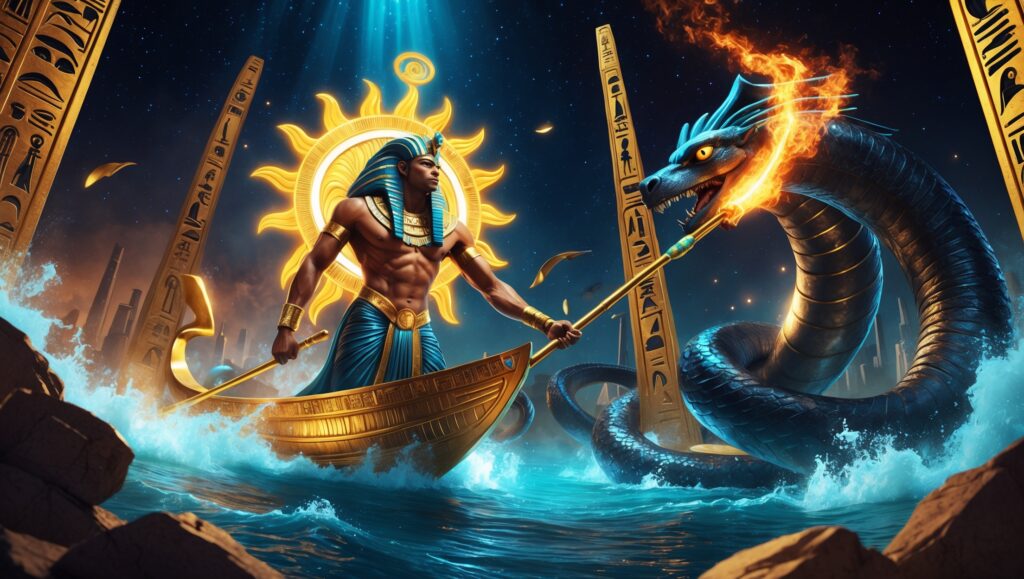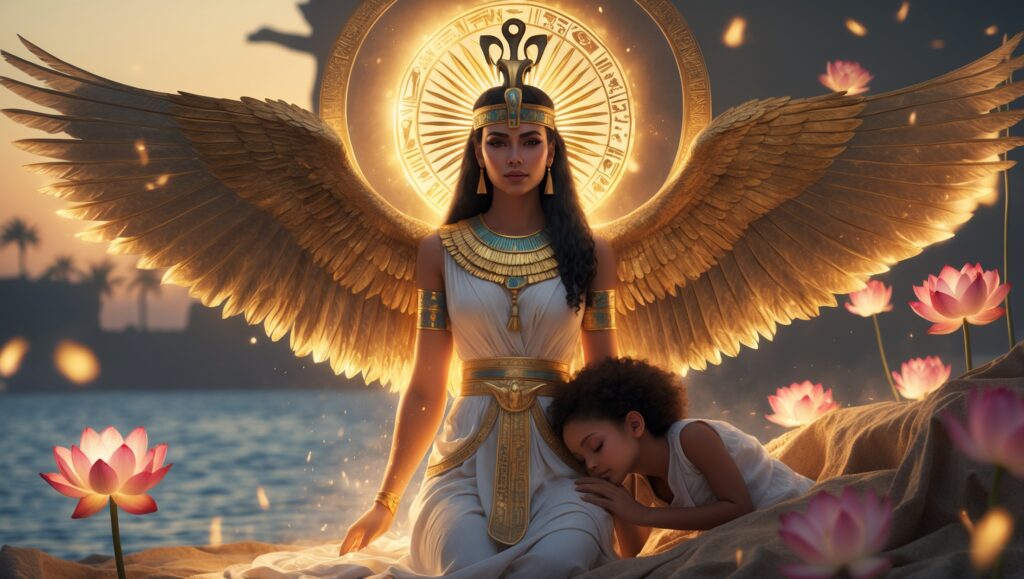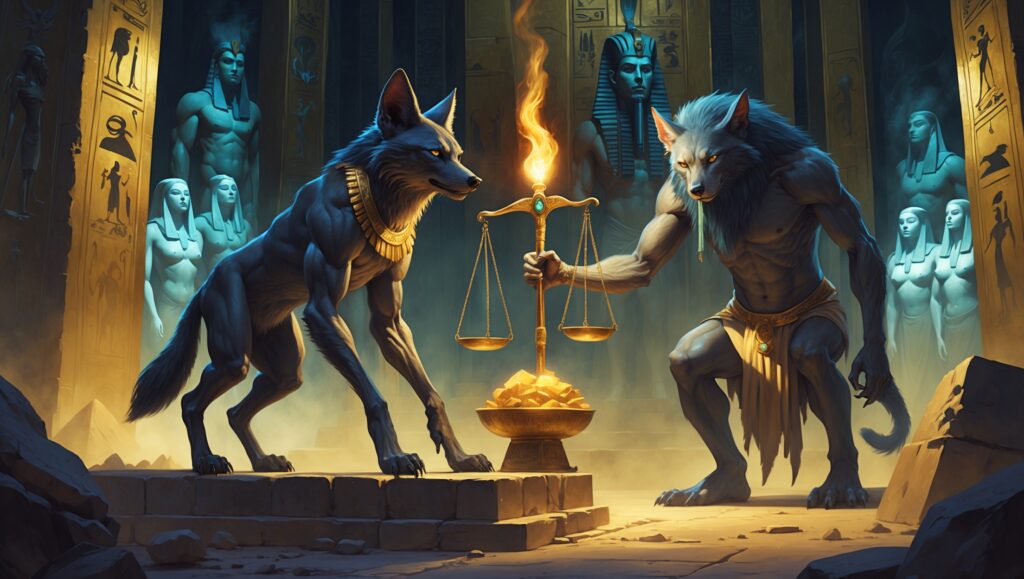Introduction
Egyptian mythology is one of the oldest and most intricate belief systems in history, shaping the civilization of the Nile for over 3,000 years. From the sun god Ra to the underworld trials of Osiris, these myths reveal how the ancient Egyptians understood life, death, and cosmic order (Ma’at).
This 5,000-word guide covers:
✅ Origins & Evolution – From Predynastic to Greco-Roman eras
✅ Major Gods & Goddesses – Ra, Isis, Anubis, and more
✅ The Egyptian Afterlife – Weighing of the Heart, Duat, and mummification
✅ Sacred Symbols & Rituals – Ankh, Eye of Horus, and temple ceremonies
✅ Modern Influence – Movies, literature, and neo-pagan revivals
1. The Origins of Egyptian Mythology
A. Predynastic & Early Dynastic Periods (6000–2686 BCE)
- Animistic beliefs: Worship of local totems (falcons, cows).
- Unification myth: The god Horus legitimized pharaonic rule.
B. Old Kingdom (2686–2181 BCE)
- Pyramid Texts: Earliest religious writings (spells for the dead).
- Ra’s dominance: Sun cult centered in Heliopolis.
C. New Kingdom (1550–1069 BCE)
- Amun-Ra syncretism: Theban priests merged gods.
- Book of the Dead: Guide to the afterlife.
2. The Egyptian Pantheon: Major Deities

| God/Goddess | Role | Symbol |
| Ra (Re) | Sun god | Solar disk |
| Osiris | Underworld, resurrection | Crook & flail |
| Isis | Magic, motherhood | Throne headdress |
| Horus | Sky, kingship | Falcon |
| Anubis | Mummification, death | Jackal |
| Thoth | Wisdom, writing | Ibis |
| Sekhmet | War, healing | Lioness |
| Bastet | Home, cats | Feline |

3. The Egyptian Creation Myths
A. Heliopolitan Creation (Ennead)
- Atum emerged from Nun (chaos).
- Spat out Shu (air) and Tefnut (moisture).
- Their children: Geb (earth) and Nut (sky).
B. Hermopolitan Ogdoad
- Four frog/snake pairs symbolized primordial forces (e.g., darkness, infinity).
C. Memphite Theology
- Ptah created the world through thought and speech.
4. The Afterlife & Judgment
A. The Soul’s Components
- Ka (life force), Ba (personality), Akh (immortal spirit).
B. Weighing of the Heart

- Heart weighed against Ma’at’s feather.
- Ammit devoured sinners.
C. The Duat (Underworld)
- Ra’s nightly journey through 12 gates.
- Osiris ruled the blessed dead.
(SEO Tip: Long-tail keyword – “Egyptian Book of the Dead explained.”)
5. Sacred Symbols & Rituals
| Symbol | Meaning |
| Ankh | Eternal life |
| Eye of Horus | Protection, healing |
| Scarab | Rebirth, sun’s cycle |
| Djed Pillar | Stability, Osiris’ spine |
Rituals:
- Opening of the Mouth (mummy ceremony).
- Daily temple offerings to gods.
6. Pharaohs: Gods on Earth
- Divine kingship: Horus incarnate.
- Akhenaten’s heresy: Briefly replaced gods with Aten (sun disk).
7. Egyptian Mythology in Modern Culture
- Movies: The Mummy, Gods of Egypt
- Literature: American Gods (Anubis), The Kane Chronicles
- Neo-Paganism: Kemetic revival movements
Conclusion: Why Egyptian Myths Endure
These stories explore universal themes—life after death, cosmic order, and divine power. Whether you’re a history buff or spiritual seeker, they remain profoundly relevant.
or more interesting mythology facts visit https://www.youtube.com/@Mythoexplorers
For more interesting mythology facts visit https://www.facebook.com/profile.php?id=61577166993705
For more interesting mythology facts visit https://www.instagram.com/mythoexplorers/
To know more about Hindu Mythology read the blog articles https://mythfacts.blog/category/hindu-mythology/
